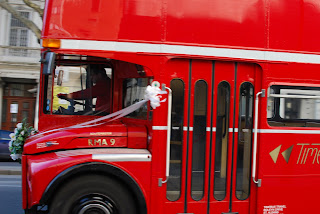 |
| Publish Post: A red bus yesterday |
One of Michael Edenborough’s more interesting arguments was that a cropped photo is, by its very nature, a substantial part of the original photograph. Whilst there is a logic behind such a presumption it is unnecessary and potentially misleading to incorporate it into the test for what is a “substantial part”.
 |
| Is the photo on the right a substantial part of the one on the left? [Almost certainly]. |
 |
| But does it follow that the photo on the right uses a substantial part of the photo on the left? [?] |
It would be interesting to better understand the reasons and motivations for cropping photographs in the first place. If the photographer readers out there (Tom Ang, I'm particularly talking about you) could provide some insight, it would be much appreciated.
1 comment:
Who, me? The answer to the question of the blog post is, not surprisingly, 'It depends'.
In photography, a crop is a portion of an image obtained by slicing off parts of the original (stress on 'original') image to remove unwanted sides or top or bottom. In the top pair, the right hand one is a crop of the left: if we restore the part cut off, we return to the original image.
It follows that, considering two images which differ as to viewpoint, field of view, content, time of creation and creator (or any one of this non-exhaustive list), one cannot be a crop of the other. The right hand of the second pair is in no way a crop of the left-hand picture. It goes against all usage to suggest so.
The 'different image' requirement is important. Imaagine I am framing up a shot of Big Ben and Westminster Bridge. I choose a position under the Lion that neatly takes in the Houses, the span of the bridge (Good Lord! That's exactly where the Claimant stood!). But I don't like the steps on the left nor the lamp on the bridge. So I zoom in to cut out (oops, nearly said 'crop out') the steps and lamp which also cleans up the large blank river area on the right. Then, to complete the picture I wait for a Routemaster to trundle along and capture the shot just before it leaves the frame. Would anyone on the No.12 say that my shot is a 'crop' of the Claimant's image?
If Edenborough's argument that a crop is per se substantial and therefore infringing is based on his defintion of a crop, then it is easily demolished. And if the definition were the normally accepted, his argument is not compelling ... but this post is already too long.
Post a Comment